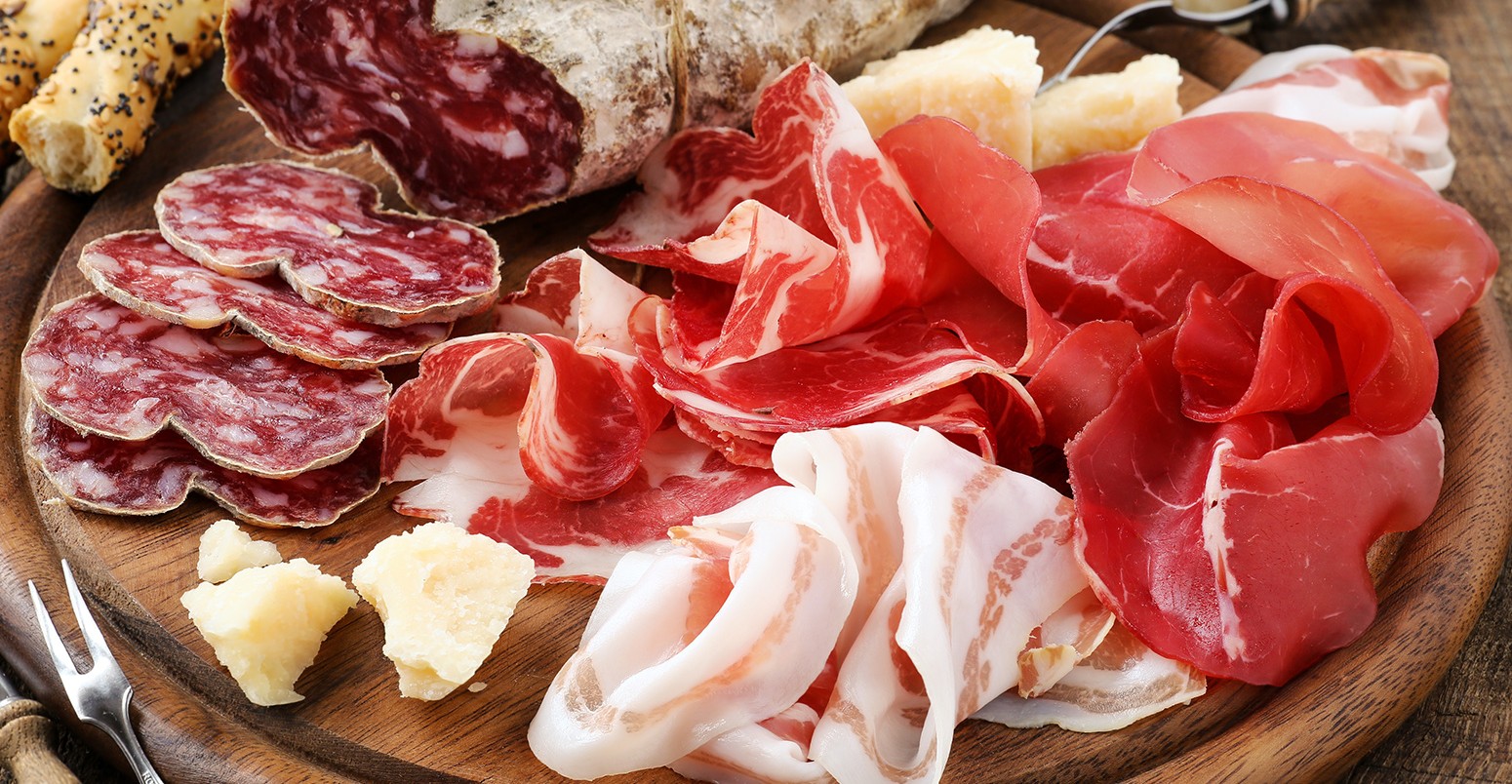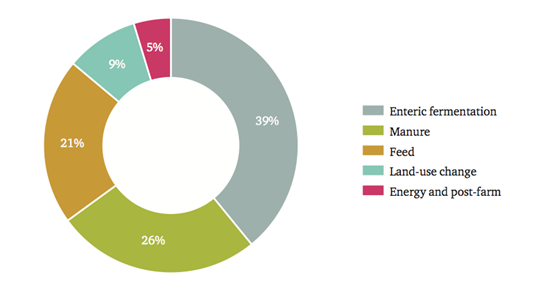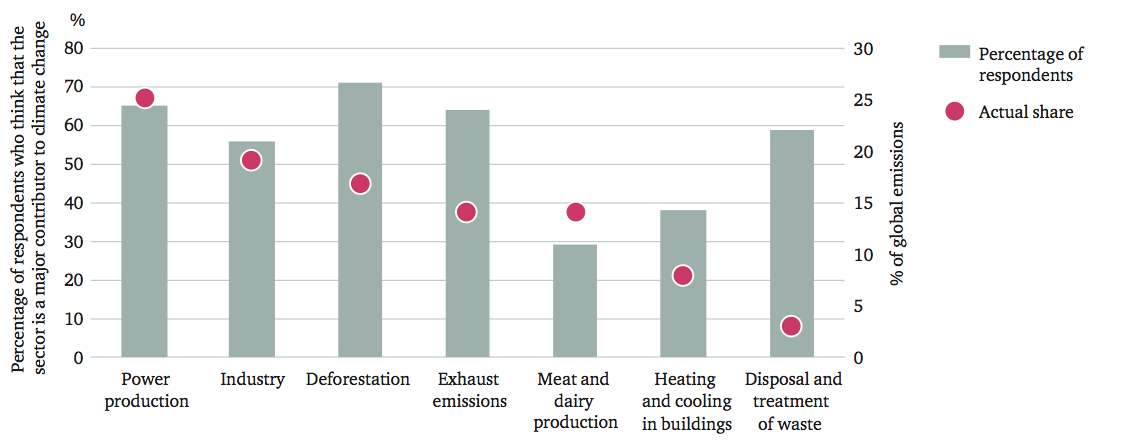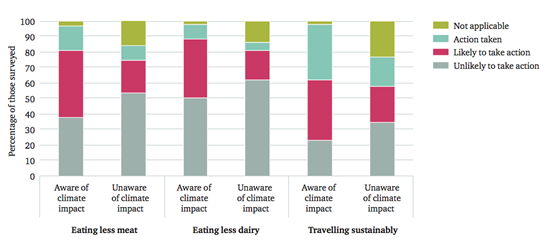
Meat and dairy consumption could mean a two-degree target is “off the table”
Robert McSweeney
12.02.14Robert McSweeney
02.12.2014 | 11:59pmWithout a shift in meat and dairy consumption, limiting global temperature rise to two degrees is unlikely, says a new study by Chatham House.
The thinktank surveyed the meat and dairy eating habits of thousands of people in very different parts of the world. The findings show consumers underestimate the contribution of meat and dairy production to climate change, leading to them underestimate the effect that limiting meat and dairy consumption can have on limiting emissions.
The sizeable footprint of meat and dairy
The meat and dairy industry is responsible for 14.5 per cent of global greenhouse gas emissions. That’s more than is produced by all cars, trains, planes and ships in the world.
Livestock emissions come directly from animals, from digestion and manure, and from transporting animals and producing their feed. Greenhouse gases are also released when forests are cleared to make way for pasture or for cropland in order to grow animal feed.
Livestock sector emissions by source. Chatham House.
China is the biggest consumer of both meat and dairy products, with the US, the EU and Brazil also in the top five. The top ten largest meat and dairy consuming countries are shown in the chart below.
The top 10 largest meat consuming countries (top), and the top 10 largest dairy and egg consuming countries (bottom) in 2011. Chatham House.
A gap in awareness
The Chatham House polling asked people about their consumption of meat and dairy and how they thought it might impact the climate. It asked them to estimate what proportion of manmade greenhouse gas emissions came from the meat and dairy industry.
The survey also asked similar questions about other sectors, with the results are shown in the chart below. Each grey bar shows the percentage of respondents who think that particular sector contributes ‘a lot’ to manmade climate change, while the pink dot shows the actual share of emissions.
Percentage of respondents who answered ‘a lot’ when asked to estimate the contribution of each sector to climate change (grey bars) and actual share of emissions (pink dots). Chatham House.
The survey results suggest that people underestimate the contribution meat and dairy production makes to greenhouse gas emissions.
Only 29 per cent of people think meat and dairy production makes a large contribution to climate change – much lower than for transport, heating and cooling buildings or treating waste, which all have a smaller share of global emissions.
A quarter of respondents think meat and dairy contribute either little or nothing to climate change. Emissions rising from power stations or car exhausts are likely to be the image people associate with greenhouse gases, rather than emissions from the meat and dairy industry.
Willingness to change
These findings are important, the report authors say, because people who are less aware of how meat and dairy production contributes to climate change say they are less willing to change their eating habits.
The Intergovernmental Panel on Climate Change suggests that the best chance of reducing emissions from livestock is from people choosing to eat less meat and dairy.
The chart below shows how awareness influences whether respondents are likely to take action to reduce their emissions. The grey bars show the percentage of people who say they wouldn’t take any action. These bars are larger when the respondents are unaware of the sector’s climate impact.
Action respondents would take to reduce their emissions from eating meat, eating dairy, and travel. Results are separated between respondents aware or unaware of the climate impact of each sector. Chatham House.
54 per cent of people who didn’t know that meat and dairy have important associated emissions levels are unwilling to change how much meat they eat, while 62 per cent wouldn’t change how much dairy they consume.
In contrast, of those who did think meat and dairy production had large associated emissions, 38 per cent and 50 per cent respectively are unwilling to change how much they consume.
Generally, the results for other sectors were similar: those less aware of a sector’s emissions are less keen to change their behaviour, the polling suggests. But awareness levels are much lower for the livestock sector, the study says, making behaviour change harder to inspire.
Consumption on the rise
Meat and dairy consumption are projected to rise substantially over the next century. By the middle of the 21st century global meat consumption is expected to be three-quarters higher than it was just 10 years ago, and dairy consumption is expected to rise by two-thirds over the same period.
23 per cent of respondents to the survey say they would like to be eating more meat, while 34 per cent would like to consume more dairy.
But despite the expected growth in emissions, the sector “attracts remarkably little policy attention at either the international or national level”, the study finds. For example, France and Bulgaria are the only developed countries to have established specific targets to cut emissions from livestock production.
“In the absence of policy,” says co-author Rob Bailey, “livestock will consume a larger and larger share of a rapidly-declining carbon budget.”
And this has implications for a global target to limit climate change, argues Bailey:
“You can make a compelling case that without dietary change at the global level, the two-degrees goal is pretty much off the table.”
Main image: Italian meat platter. Credit: kuvona/Shutterstock.com.
Bailey, R., Froggatt, A. and Wellesley, L. (2014) Livestock - Climate Change's Forgotten Sector: Global Public Opinion on Meat and Dairy Consumption, Chatham House.





